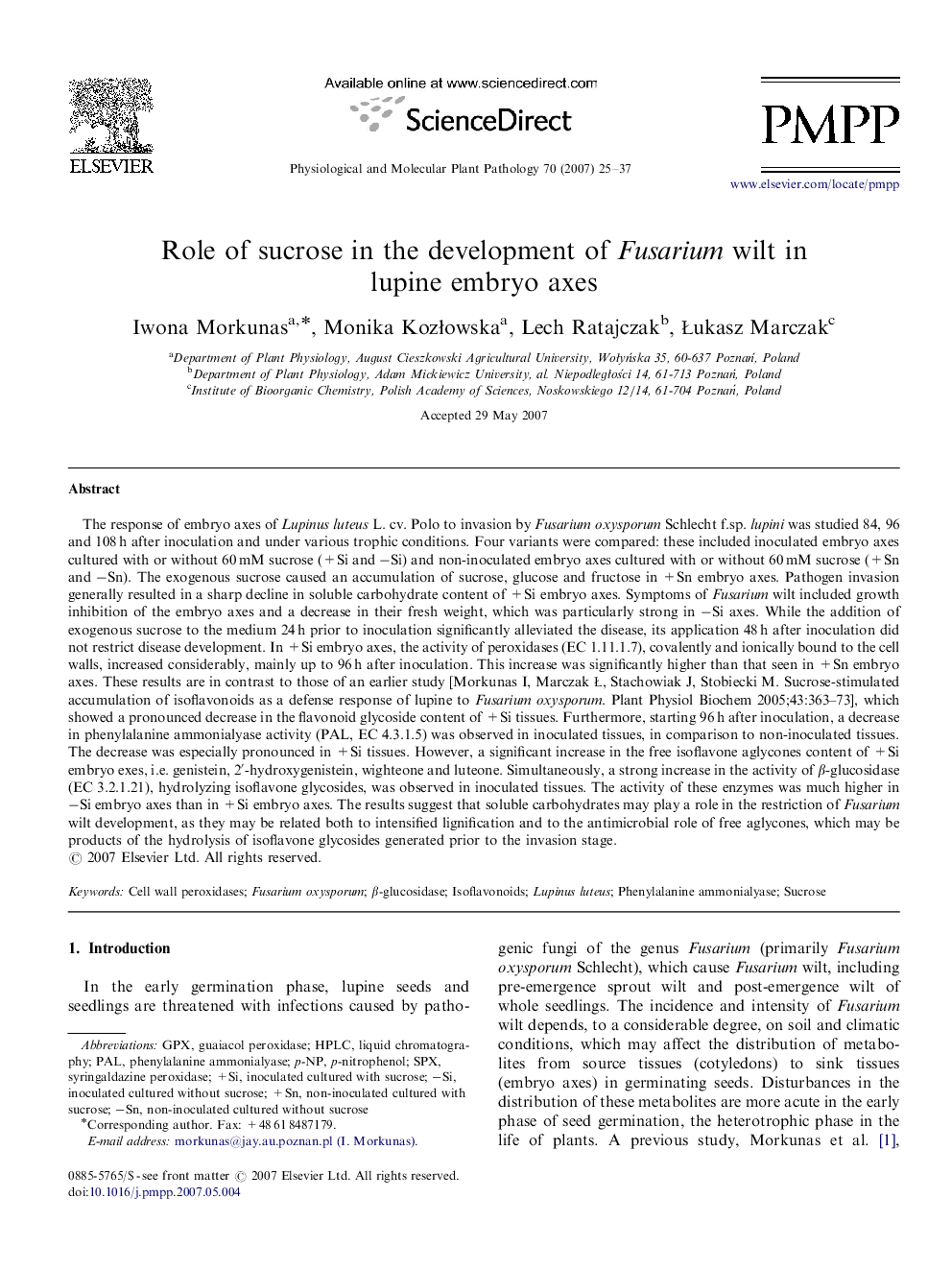| Article ID | Journal | Published Year | Pages | File Type |
|---|---|---|---|---|
| 2836744 | Physiological and Molecular Plant Pathology | 2007 | 13 Pages |
The response of embryo axes of Lupinus luteus L. cv. Polo to invasion by Fusarium oxysporum Schlecht f.sp. lupini was studied 84, 96 and 108 h after inoculation and under various trophic conditions. Four variants were compared: these included inoculated embryo axes cultured with or without 60 mM sucrose (+Si and −Si) and non-inoculated embryo axes cultured with or without 60 mM sucrose (+Sn and −Sn). The exogenous sucrose caused an accumulation of sucrose, glucose and fructose in +Sn embryo axes. Pathogen invasion generally resulted in a sharp decline in soluble carbohydrate content of +Si embryo axes. Symptoms of Fusarium wilt included growth inhibition of the embryo axes and a decrease in their fresh weight, which was particularly strong in −Si axes. While the addition of exogenous sucrose to the medium 24 h prior to inoculation significantly alleviated the disease, its application 48 h after inoculation did not restrict disease development. In +Si embryo axes, the activity of peroxidases (EC 1.11.1.7), covalently and ionically bound to the cell walls, increased considerably, mainly up to 96 h after inoculation. This increase was significantly higher than that seen in +Sn embryo axes. These results are in contrast to those of an earlier study [Morkunas I, Marczak Ł, Stachowiak J, Stobiecki M. Sucrose-stimulated accumulation of isoflavonoids as a defense response of lupine to Fusarium oxysporum. Plant Physiol Biochem 2005;43:363–73], which showed a pronounced decrease in the flavonoid glycoside content of +Si tissues. Furthermore, starting 96 h after inoculation, a decrease in phenylalanine ammonialyase activity (PAL, EC 4.3.1.5) was observed in inoculated tissues, in comparison to non-inoculated tissues. The decrease was especially pronounced in +Si tissues. However, a significant increase in the free isoflavone aglycones content of +Si embryo exes, i.e. genistein, 2′-hydroxygenistein, wighteone and luteone. Simultaneously, a strong increase in the activity of β-glucosidase (EC 3.2.1.21), hydrolyzing isoflavone glycosides, was observed in inoculated tissues. The activity of these enzymes was much higher in −Si embryo axes than in +Si embryo axes. The results suggest that soluble carbohydrates may play a role in the restriction of Fusarium wilt development, as they may be related both to intensified lignification and to the antimicrobial role of free aglycones, which may be products of the hydrolysis of isoflavone glycosides generated prior to the invasion stage.
